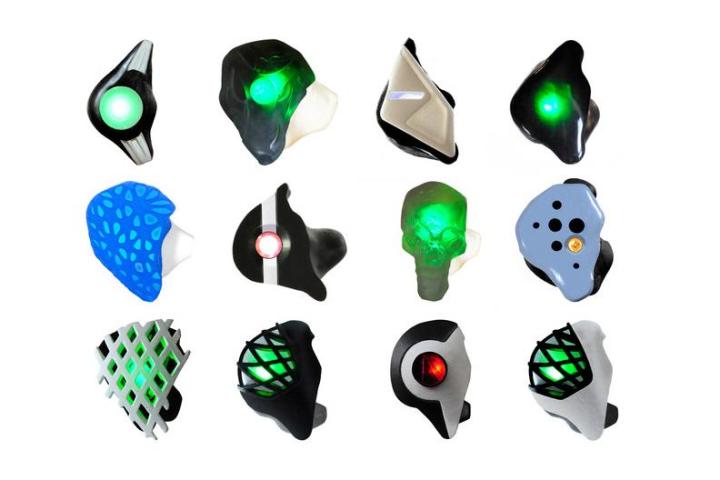
A potential customer starts by using the OwnPhones mobile app to upload a short video of their ears, which is then converted to 3D data by OwnPhones’ servers. The user then chooses from a selection of styles, materials, and colors to create their custom pair of earphones. But the app’s usefulness doesn’t end there.
There’s still some customization to be done even after you’ve received your custom-fit cans in the mail. The device’s “SoundScaping” feature is designed to lower environmental noises like traffic or the hubbub of a crowded restaurant, but just which sounds are filtered is up to you. OwnPhones claims users can use the app to let through certain requested sounds: your alarm clock’s signature buzz, your friend’s voice, a car horn (when you’re biking to work), etc. The company refers to these as Real World Notifications that “let you disappear into your music while letting you also pay attention to what’s going on around you.” The app is a huge part of the Ownphones design, and without on board controls, essentially functions as the central control panel for the buds.
Another useful feature is the “OwnStatus,” a function that lets the user set their earphones to glow one of three colors to broadcast their current status while in the workplace, at the library, or on the bus. A red light signifies “Leave me alone,” yellow says “I’m busy, but you can interrupt if it’s important,” and green means “Let’s chat!” Of course, that all depends upon the outside world knowing your secret headphone code. Maybe hand out a leaflet to your office mates?
As for audio specs, the OwnPhones boast a claimed 20Hz-20kHz frequency response, aptX for CD quality sound transmission from compatible devices, and a max volume level of 100.5dBs. The battery life is estimated at 4-5 hours, and the earphones charge via Micro USB in 1.5 hours.
While there are a lot of questions about the OwnPhones unanswered by the Kickstarter page, one potential red flag we noticed is the low price-point; shoppers can pay an Early Bird price of just $150 to secure a pair for delivery next spring. That seems a bit low for a fully wireless pair of earphones (most wireless buds are connected with a tether for stereo audio), 3D printed or otherwise.
However, the various pledge options are not all for the same pair of ‘phones, accessories, and features. For $150 you’ll get the “Ownphones Fit,” which doesn’t appear to come with any of the aforementioned filtering features, just the customized fit. $175 will let you modify the appearance, and the $200-plus price-point is where you’ll start to see the features that really make OwnPhones sing. That actually sounds more in line with a quality device that boasts these kind of ambitious features, and the top-tier model will cost $300 once the Early Birds are gone, with an expected $400 MSRP once they hit the open market.
Plenty of people seem to have faith that OwnPhones can deliver on their promises, however. At the time of publication, the earphones have reached $175,000 of their $250,000, with 30 days left to go. If you have faith, you can pledge your donation now.


